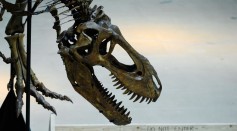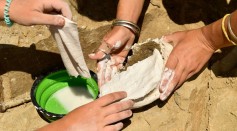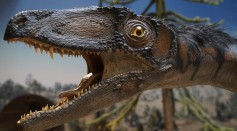Jurassic Park

Jurassic Park Is Wrong: T.Rex Actually Had Lips Like a Lizard, New Study Reveals
Real-Life Jurassic Park: Scientists Will Use Extinct Beasts' DNA to Bring Back Tasmanian Tiger, Woolly Mammoth But Not Tyrannosaurus Rex

SeaWorld Likened to Jurassic Park Where ‘Hybrid Orcas’ Are Created, Former Killer Whale Trainer Claims
Woman Finds 'Sex-Crazed' Moth Lurking in Her Conservatory Comparable to a Shark With Wings

Dinosaur Skeleton Featured in the Famous ‘Jurassic Park’ Sold for Over $12M; Report Details the 110-Million-Year-Old Fossilized Bones

Are These Baby Dinosaurs? Viral Video Features What Appears to Be Little Sauropods Leaving Viewers Confused

Real-Life Jurassic Park Possible? Experts Say Dinosaurs Can Be Recreated From Their DNA
Tyrannosaurus rex Could Be Picky Eater; Did Jurassic Park Depict These Dinosaurs Wrongly?

Dinosaurs Lived in the Arctic Year-Round: May Not Be as Cold-Blooded as Previously Thought?
Why Did Neuralink Co-Founder and President Leave the Brain Implant Company?
Co-Founder of Neuralink Says it Has Tech to Create Super Exotic Dinosaurs

Bringing Back Dinosaurs Using Amber-Encased DNA Could Also Bring Back Diseases, Scientist Warns

The Indonesian "Jurassic Park" Project: Inciting Fear and Concerns from Locals
Bringing Extinct Animals Back to Life No Longer Just Part of the Movies
Most Popular

How Technology Is Changing the Real Estate Industry?

How a Plant-Based Diet Can Protect Against Breast Cancer: Insights from Nutrition Research

Study Reveals High Turnover in Scientific Research Careers: What This Means for Future Scientists

Why It's So Difficult to Lose Weight: The Biological Explanation Behind Obesity





